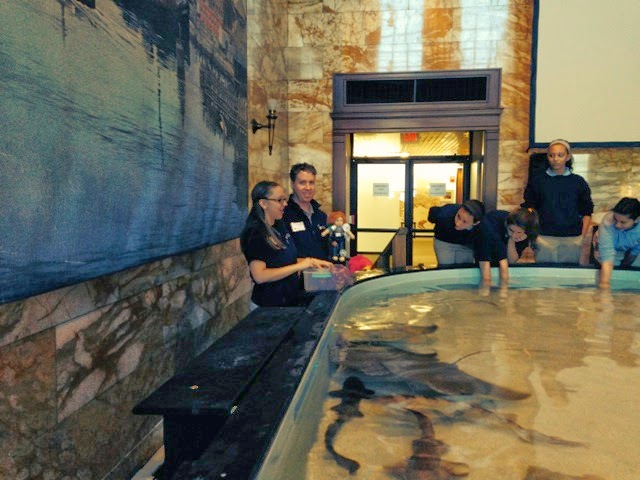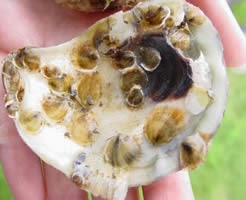Hey Sea Fans!
My latest stop on my world travels was at the Ocean Explorium in New Bedford, USA! Thanks to Abbey (cool name!!) and Warren for hosting me, it's always nice seeing more of what goes on at other aquariums. I got to check things out AND even got to lend a hand...
Like at the ray and shark pool where I taught a group of students all about these amazing elasmobranchs:
They loved being able to touch the animals and were amazed at the roughness of shark skin and the smoothness of the rays. Shark skin is made up of denticles which are like small teeth, so the skin feels like sand paper. At one of the aquariums that I used to work at, a Snaggletooth shark that had been rescued from fishermen came in and desperately needed some help. It was so weak from lying still on the sand that it needed someone to help it swim. (Remember that many sharks have to keep moving to breathe!! As they move through the water, fresh water filled with oxygen flows over the gills so that the shark can breathe.) I volunteered and believe me, after a few hours, my arm that was around its body felt RAW from the skin rubbing me!!! Well worth it though, I would do it again in a heartbeat to help these amazing animals!
Feeding time! See how the animals all gathered in the same spot? They are fed from the same spot each time so they gather there when they see the aquarist ready to feed them. This is called "conditioning".
One of the most interesting things I got to see was the Coral Farm. This is where tiny little pieces of coral, called fragments, are grown into decent sized corals for sale to hobbyists. This means that the general public can buy captive grown corals rather than getting them from a place that sells corals collected from the ocean. Another way that aquariums aid conservation and education.
 |
| Me holding a coral fragment. |
 |
| Preparing to feed the coral reef tank. |
I'm definitely more a warm water diver, but it was good fun working at the cold water touch tank with a spider crab:
Science on a sphere is a cool interactive they have where you can learn all about any country you like! If you visit the Ocean Explorium, you must check South Africa, my home country, out and let me know what you found.
Have a great weekend Sea Fans!
Chat soon.
Cheers!
Abby
}( *)8


















